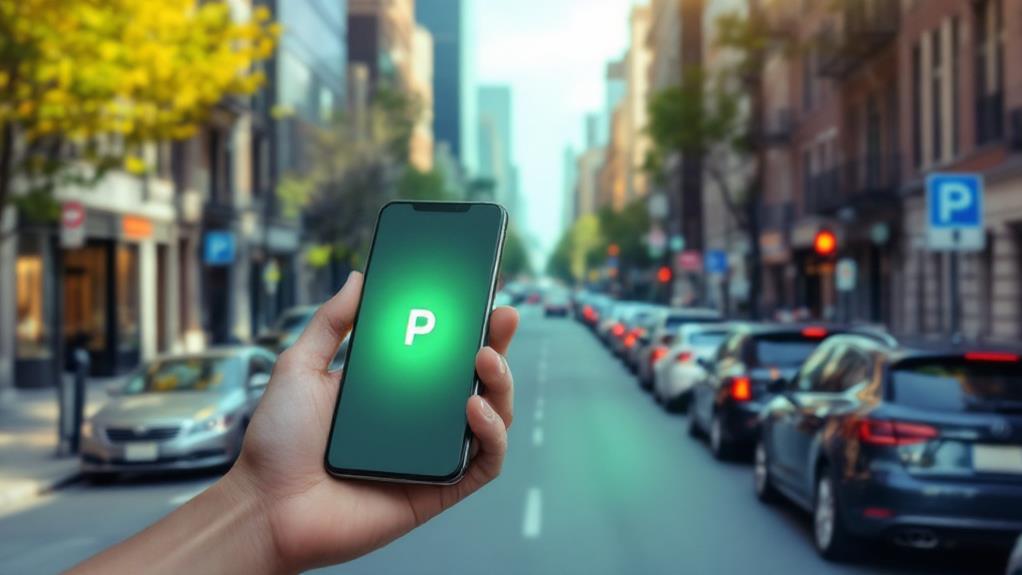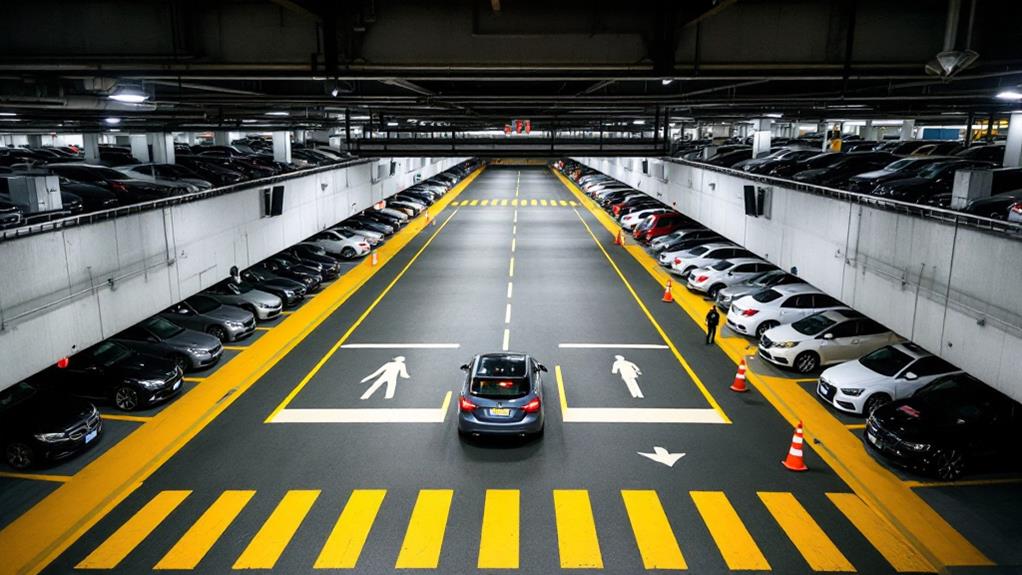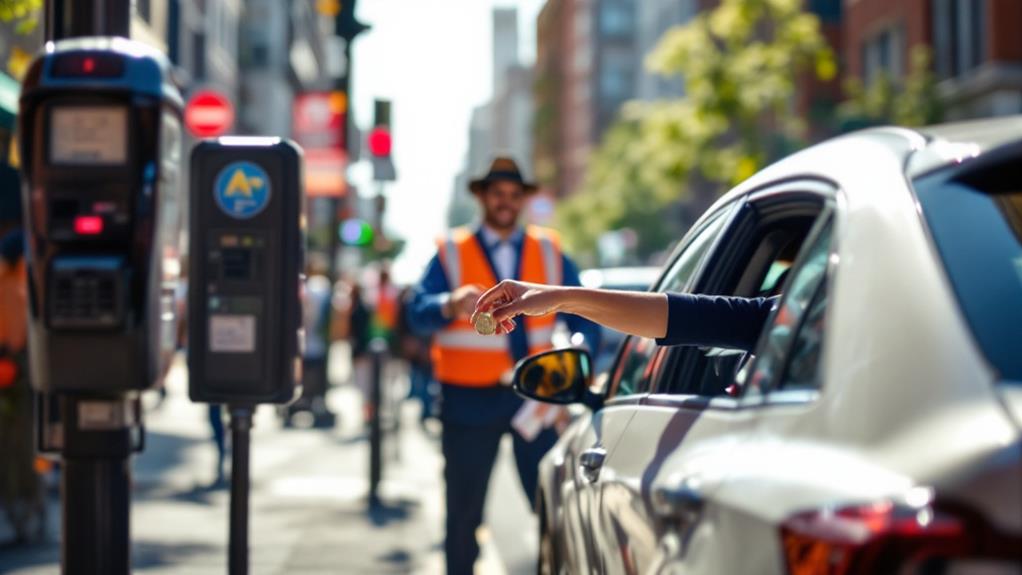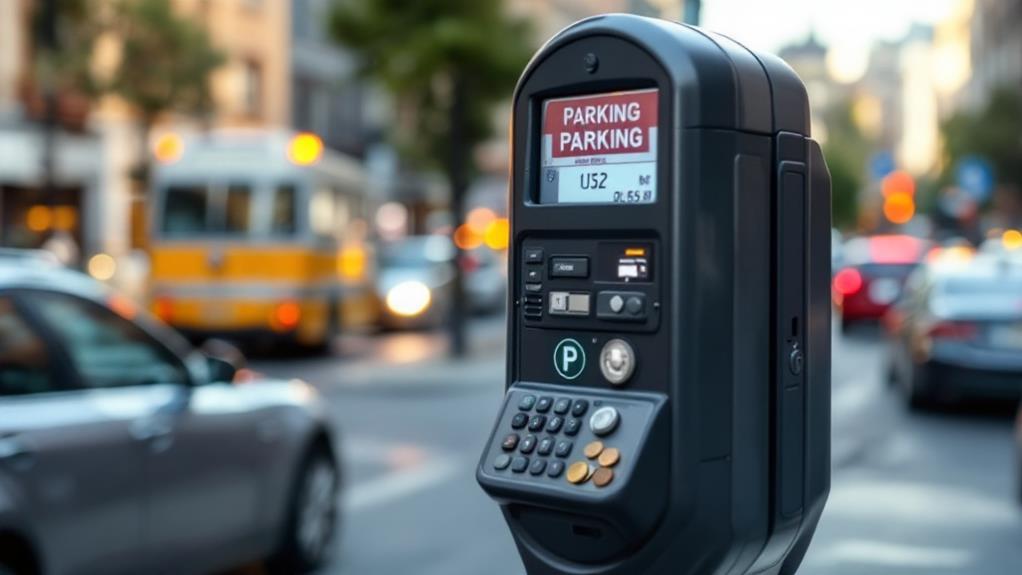Why Parking Your Car on the Street May Cost More Than You Think
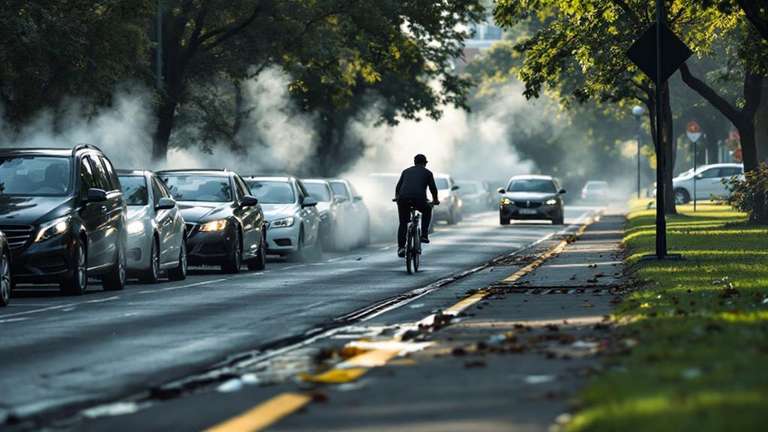
When you park your car on the street, you're likely underestimating the true cost. Beyond occasional meter fees or tickets, street parking carries hidden expenses that impact you and your community. It consumes precious public land, drives up housing costs, and creates tensions among neighbors. The economic distortions from subsidized parking can stifle local businesses and reduce tax revenue. Environmental consequences include increased emissions from cruising for spots and urban heat islands from expansive paved areas. Smart technologies and demand-based pricing are emerging to address these issues, but the full image of street parking's costs goes far deeper than you might expect.
The Hidden Costs of Street Parking
Sticker shock hits hard when you realize the true cost of street parking. You might think it's just the pocket change you feed into parking meters, but the hidden expenses are staggering. The replacement cost of a single parking space can range from $5,000 to $50,000, depending on whether it's a surface lot or a parking garage. These costs are often passed on to you through higher prices for goods, services, and housing.
In some cities, the total replacement cost of parking per household is astronomical. For example, in Jackson, Wyoming, it's a whopping $192,000. This impacts land use, as prized real estate is dedicated to parking spaces instead of more productive purposes. Parking requirements also drive up housing costs, adding an estimated $225 per month to your rent or mortgage.
But it's not just your wallet that suffers. Excessive parking spaces can stifle economic growth by preventing small businesses from opening and discouraging developers from building needed housing. Local governments lose out too, as parking lots reduce potential tax revenue. The next time you park on the street, remember: you're paying far more than just the meter fee.
Psychological Attachment to Parking Spaces
Nearly everyone has experienced that possessive feeling over a parking spot, especially the one right in front of their home. This psychological attachment to parking spaces is a common phenomenon, despite the fact that street parking is public property. You might find yourself fiercely guarding "your" spot, particularly after shoveling it clear following a snowstorm.
This expectation of ownership often leads to conflicts with neighbors and newcomers, as you compete for limited street parking. You may even feel entitled to priority access, regardless of your status in the community. This sense of possession can escalate tensions and create a hostile environment on your block.
Parking enforcement often bears the brunt of this psychological attachment. You might view them as predatory or unjust when they ticket "your" space, sometimes leading to confrontations or protests. It's important to remember that these officers are simply doing their job, enforcing rules on public property.
Understanding this psychological attachment can help you manage the complex emotions surrounding street parking and potentially avoid unnecessary conflicts with neighbors and law enforcement.
Public Land and Opportunity Costs
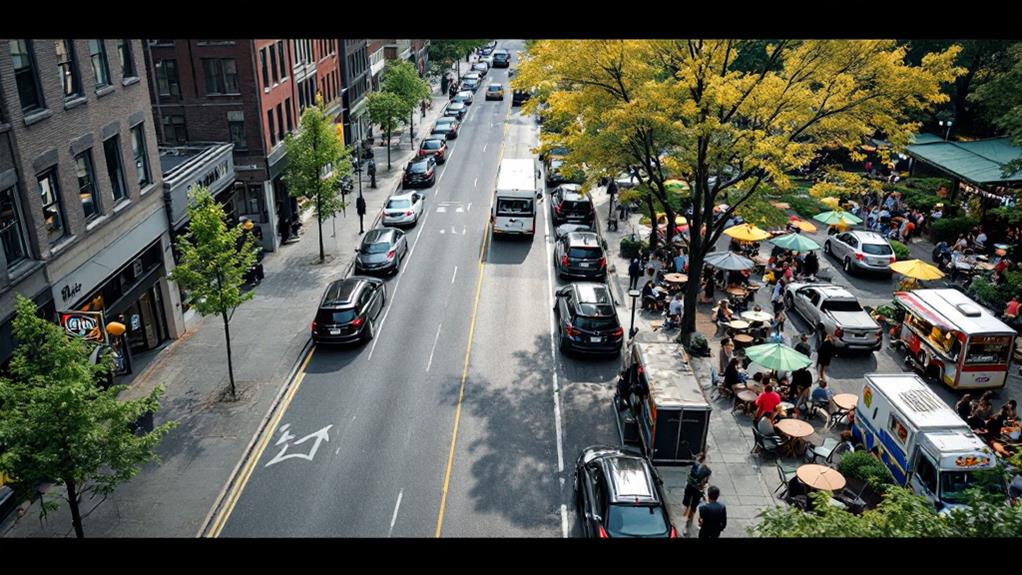
Streets can consume up to 30% of a city's total land area, representing a massive opportunity cost for dedicating public space to private car storage. When you park your car on the street, you're using precious public land that could be utilized for other purposes. Free or cheap parking acts as a "fertility drug for cars," leading to inefficient land use and reducing space for housing, greenery, or transportation infrastructure.
You might not realize it, but the cost of parking spaces is significant. In Des Moines, the total replacement cost of parking is 60% of the median-priced home, while in Jackson, WY, it's a staggering $192,000 per household. These figures highlight the fiscal burden of maintaining parking infrastructure.
Moreover, parking lots can prevent the development of essential amenities like grocery stores in food deserts and reduce potential tax revenue for local governments. By imposing higher fees for parking spaces, cities could promote higher residential density, support mass transit, and use limited urban land resources more efficiently. As you consider the true cost of parking your car on the street, remember that it's not just about convenience—it's about the opportunity cost of public land use.
Neighborhood Dynamics and Parking Tensions
Beyond the fiscal implications of street parking, there's a hidden cost in neighborhood vibrancy. When you park your car on the street, you're unwittingly entering a complex web of social dynamics and tensions. As new residents move in and compete for limited on-street parking spots, conflicts can arise with long-time neighbors who feel a sense of ownership over these public spaces.
The issue is further complicated by the conversion of private garages into Airbnb units, pushing more cars onto already crowded streets. This spillover effect can strain relationships between neighbors and alter the character of residential areas. Minimum parking requirements in zoning codes, while intended to manage demand, can inadvertently drive up housing costs and impact urban design, potentially reducing affordable housing options.
To address these challenges, some communities implement parking permit programs. While these can help manage demand, they may also create new dynamics within neighborhoods, potentially favoring some residents over others. As you traverse your local streets in search of parking, remember that the true cost of on-street parking extends far beyond parking prices, influencing the very fabric of your community.
Economic Realities of Urban Parking
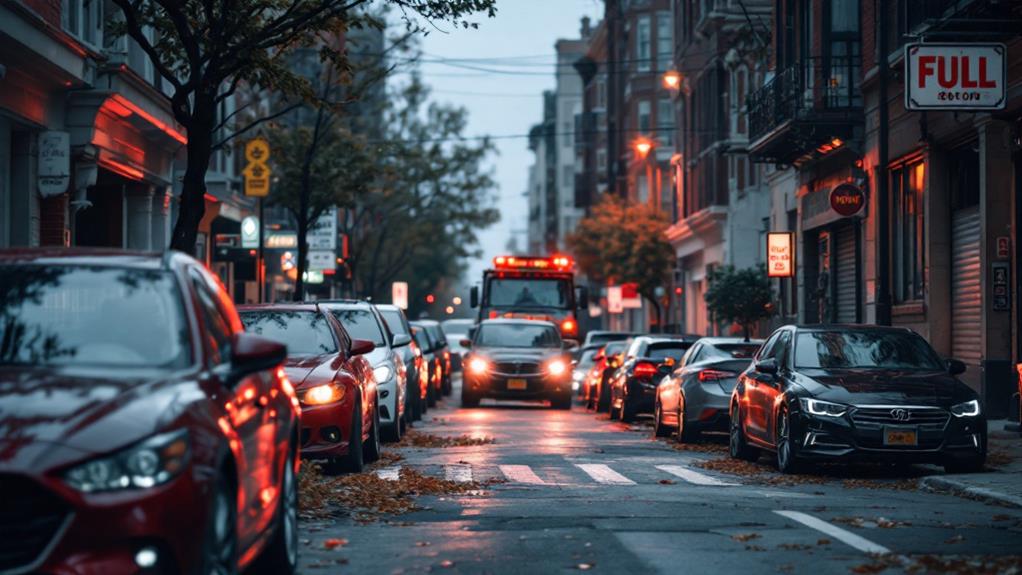
A hidden economic reality lurks beneath the surface of urban parking. You might not realize it, but those parking spaces you use daily are often worth more than the car you're parking in them. Despite their high value, they're frequently offered for free or at minimal cost, creating a significant economic distortion.
The root of this issue lies in legally mandated parking minimums, which lead to an oversupply of spaces. This artificially lowers the market price of parking, effectively subsidizing car usage. In fact, the free-parking subsidy to cars in the U.S. was estimated at a staggering $127 billion in 2002, surpassing even the costs of driving.
This economic imbalance has far-reaching consequences. The total replacement cost of parking in some cities can be as high as 60% of the median home price, highlighting the enormous economic burden of parking infrastructure. By removing these subsidies and allowing parking to reflect its true market value, you'd see a shift towards more sustainable transportation choices and land use patterns. It's time to recognize the real cost of urban parking and its impact on our cities' urban design.
Smart Technologies Revolutionizing Parking Management
Increasingly, smart technologies are altering the scenery of urban parking management. You'll notice license plate recognition systems automating enforcement and reservations for curbside parking. These systems work in tandem with sensors embedded in curbs, detecting open spaces and guiding you to available spots.
Mobile apps integrated with parking payment systems now provide real-time information on parking availability and pricing. This technology aligns with Donald Shoup's principles of flexible pricing, adjusting meter rates based on supply and demand. The goal is to guarantee at least one open spot per block, making it easier for you to find parking without circling endlessly.
Automated enforcement solutions are also changing the game. They trigger fines for illegal parking, discouraging abuse of limited curb space. This technology helps balance the use of on-street parking with parking garages, ensuring efficient use of urban space.
As these smart technologies become more prevalent, you'll find that parking your car on the street may come with unexpected costs and benefits. The parking meter of the future isn't just about collecting coins; it's about optimizing urban mobility and space utilization.
Innovative Strategies for Curb Space
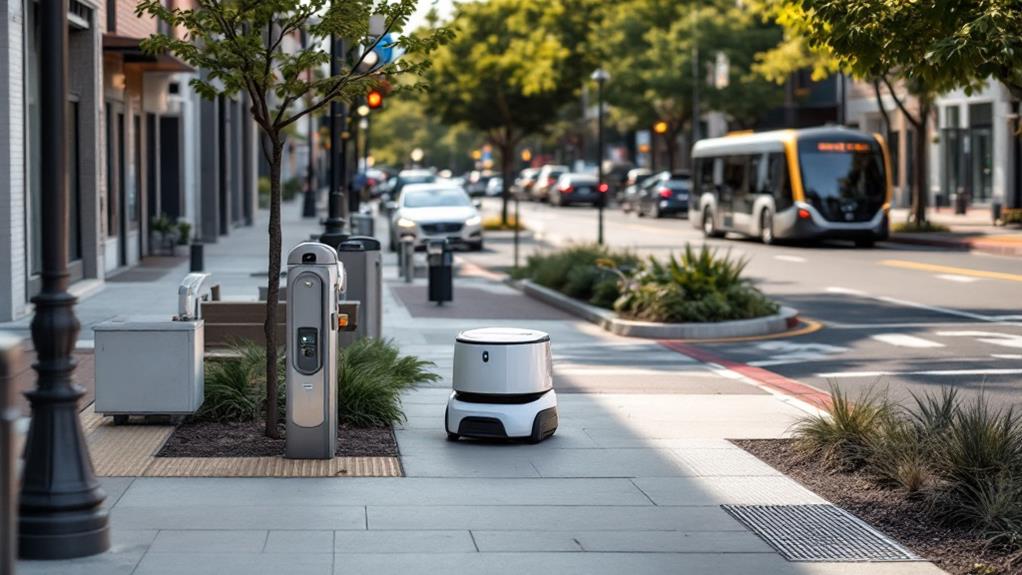
Smart technologies are just the beginning of parking innovation. As cities evolve, they're exploring innovative strategies for curb space management that go beyond traditional parking methods. One such approach is demand-based pricing for on-street parking. This variable system adjusts rates based on supply and demand, ensuring at least one vacant spot per block. It's a clever way to optimize curb space usage while managing traffic flow.
You might also encounter back-in diagonal parking in some areas. This design not only creates more parking spaces but also slows traffic, enhancing safety. Despite its benefits, it's often overlooked due to conventional traffic engineering mindsets.
Parking valet services offer another solution for efficient space utilization. By outsourcing parking management, these services enable shared parking between different uses, maximizing limited space.
License plate recognition technology is revolutionizing parking management, streamlining reservations, payments, and enforcement. But curb space isn't just for parking anymore. Cities are reimagining these areas for stormwater management, commercial activities, and carbon-free mobility. As you park on the street, remember that the true cost of curb space extends far beyond your parking fee, reflecting complex urban planning decisions and community priorities.
Demand-Based Pricing and Efficiency
Through demand-based pricing, cities are revolutionizing curb parking management. This market-based system adjusts prices as you approach your destination, encouraging efficient parking decisions. It guarantees at least one vacant spot per block, minimizing time spent cruising and reducing congestion.
Your parking choices respond to these prices in a self-organizing pattern that minimizes collective walking time, creating a buffer for late arrivals. This approach promotes effective use of limited curb space while maximizing overall system efficiency.
- Reduces cruising and congestion
- Guarantees space availability
- Maximizes parking efficiency
- Encourages thoughtful parking choices
While demand-based pricing offers numerous benefits, it's vital to ponder equity implications. Policymakers must address the potential disproportionate impact on lower-income drivers to ascertain fair access to curb parking.
Environmental Impact of Parking Policies
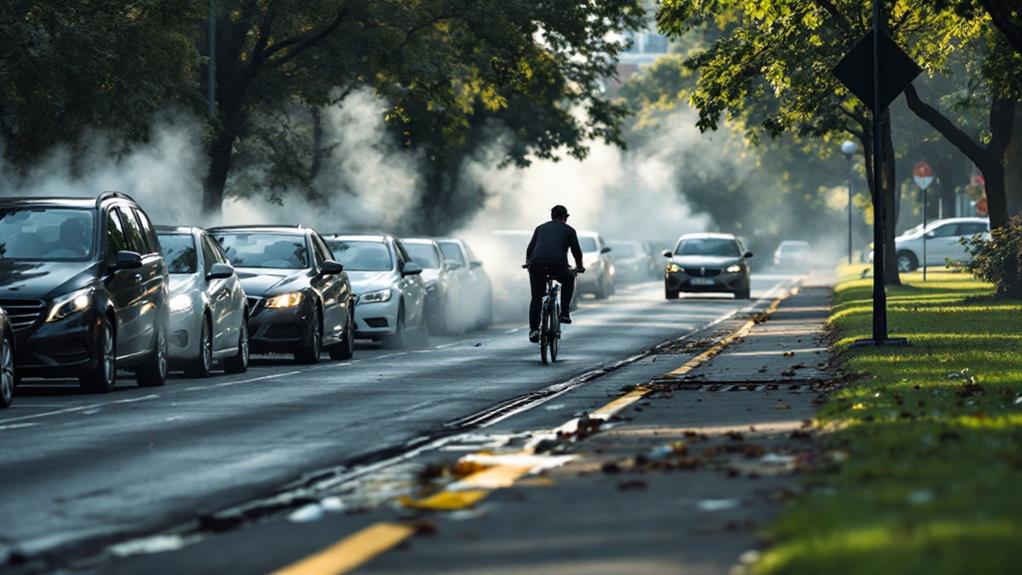
Parking policies have far-reaching environmental consequences that extend beyond mere convenience. When you park your car on the street, you're contributing to a complex system that impacts our environment in ways you might not realize.
Free or underpriced street parking leads to excess parking and traffic congestion as drivers circle endlessly for spots. This wasteful behavior increases greenhouse gas emissions and air pollution. Additionally, minimum parking requirements in zoning laws force developers to dedicate essential land to parking lots and garages. These expansive paved areas contribute to urban heat islands and reduce space for green infrastructure.
The environmental costs of parking aren't reflected in the price you pay for a spot or even in parking tickets. In fact, parking subsidies often exceed the true cost of driving, distorting transportation choices and encouraging car dependency. This discourages more sustainable modes of travel and perpetuates a cycle of increased emissions.
To address these issues, cities can implement demand-based pricing and reduce minimum parking requirements. These strategies can help cover the cost of parking's environmental impact, incentivize more efficient land use, and promote greener transportation options.
